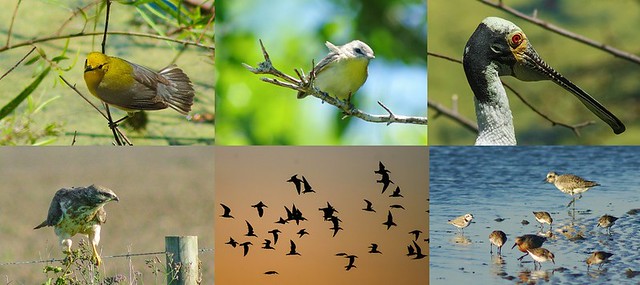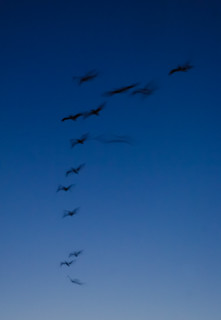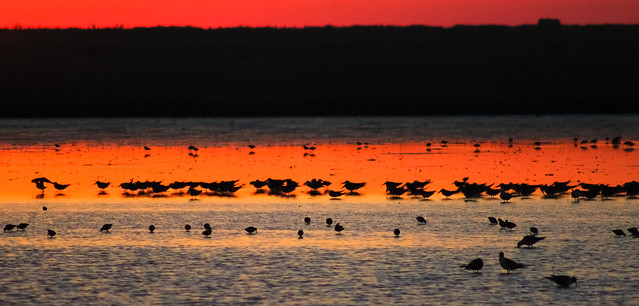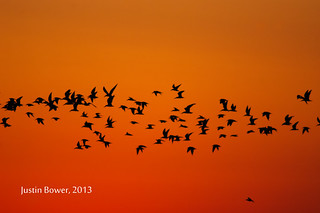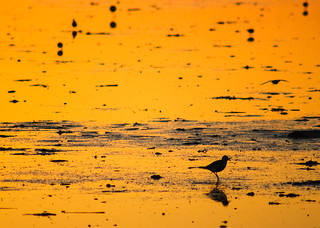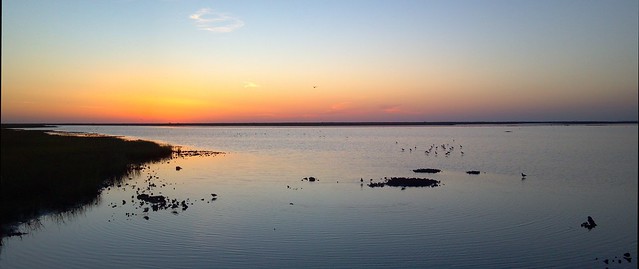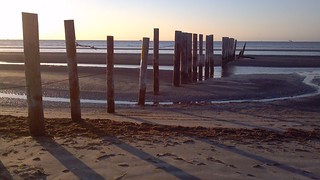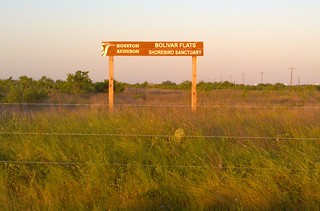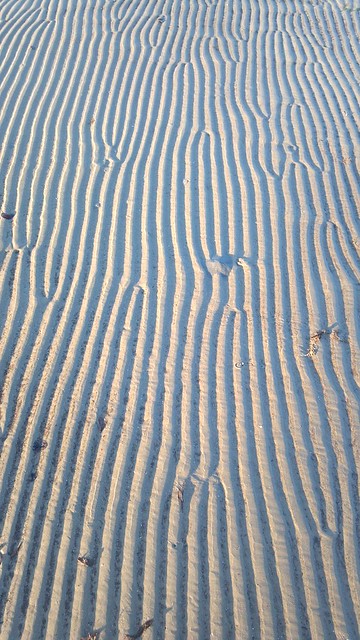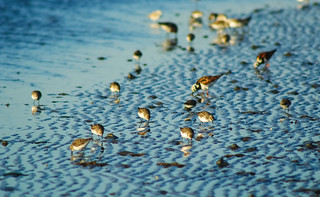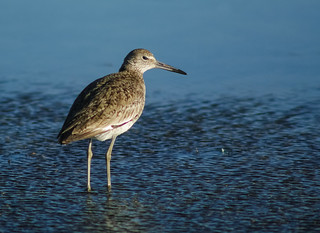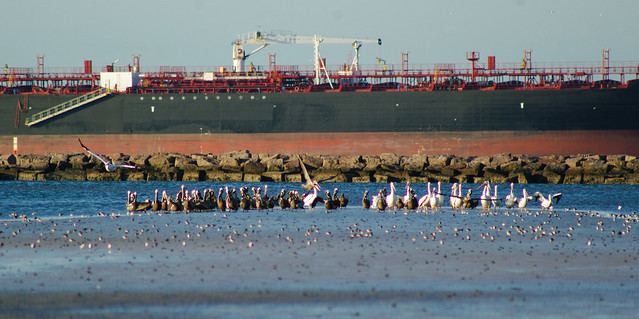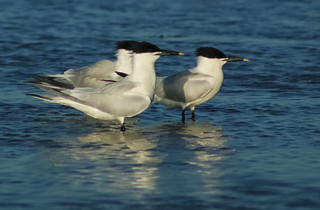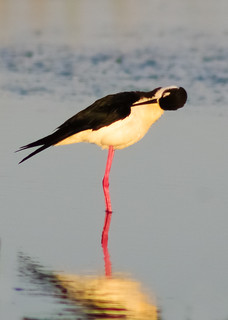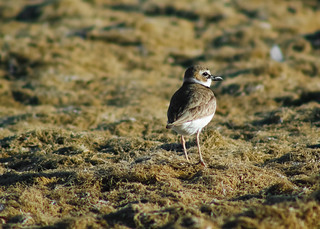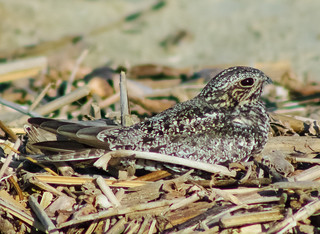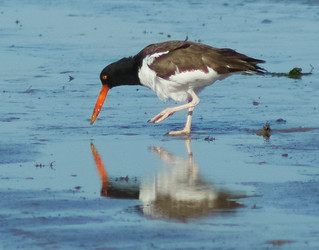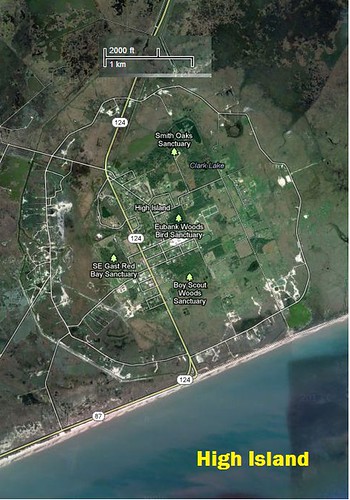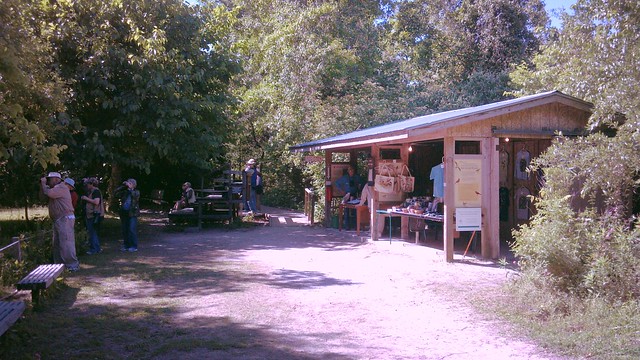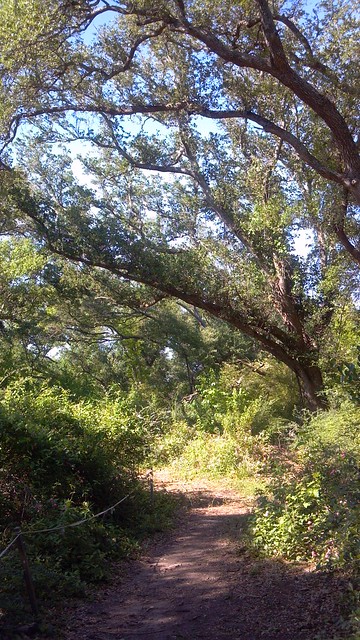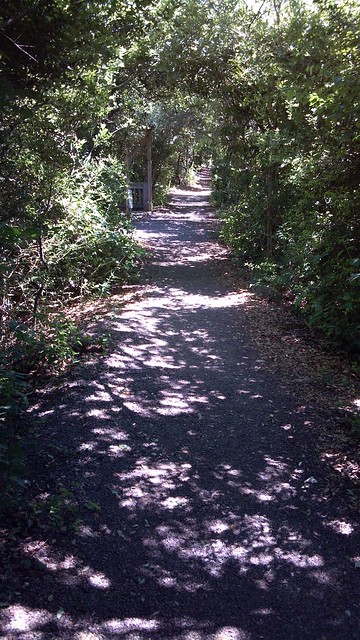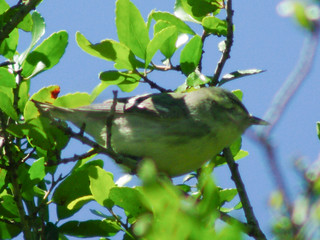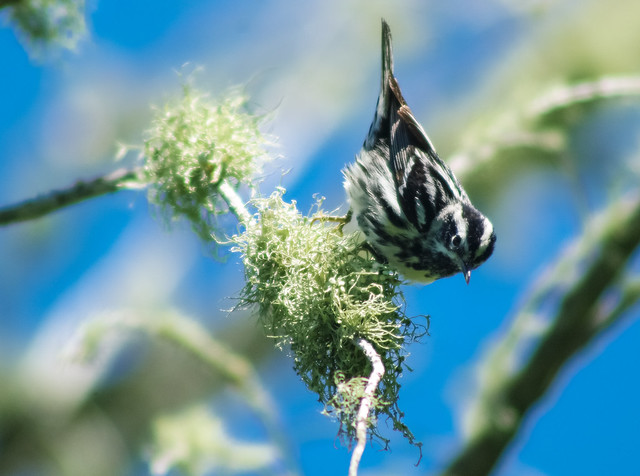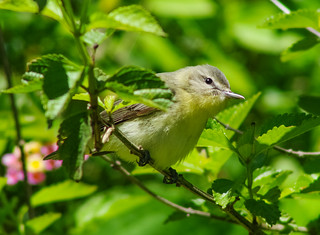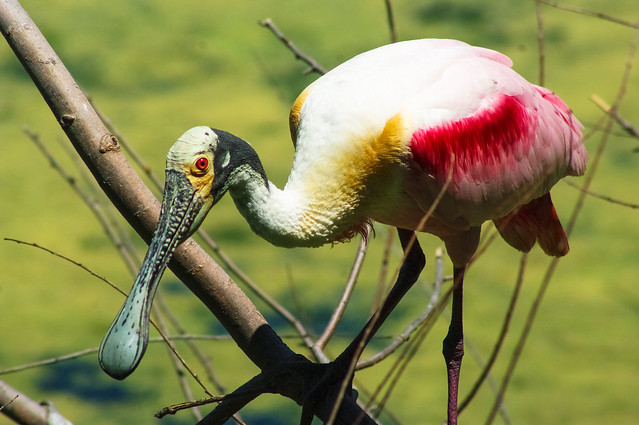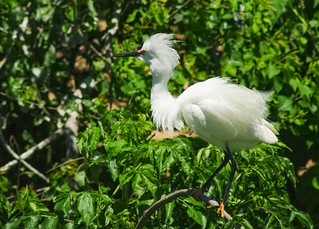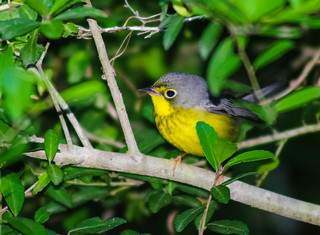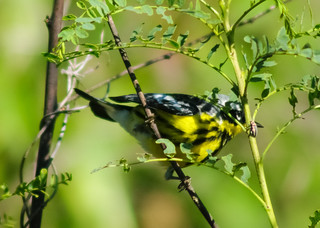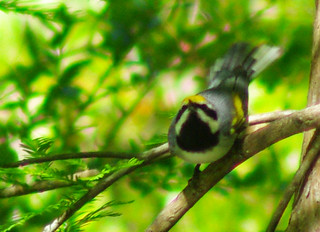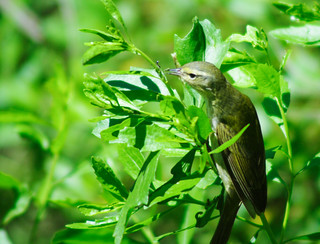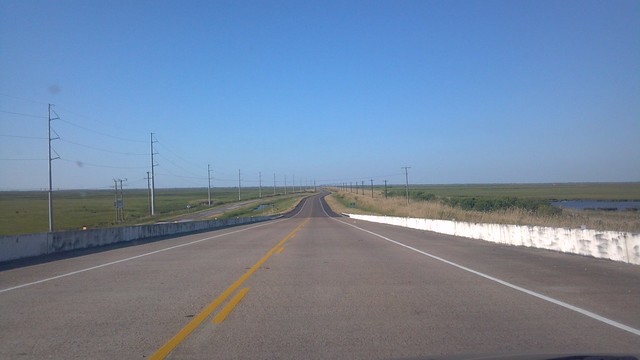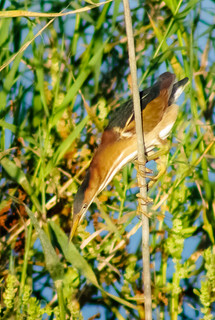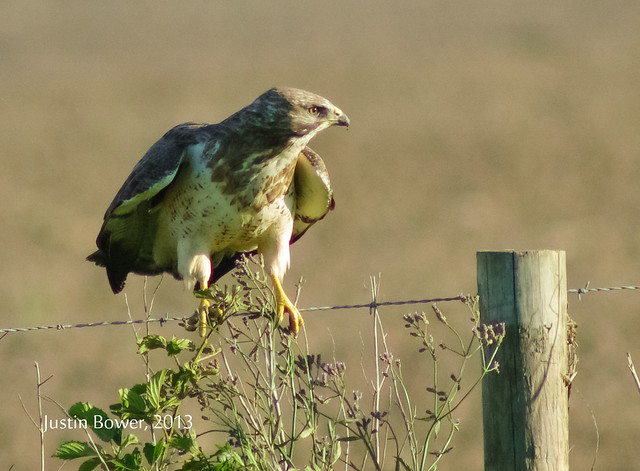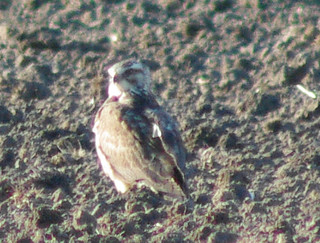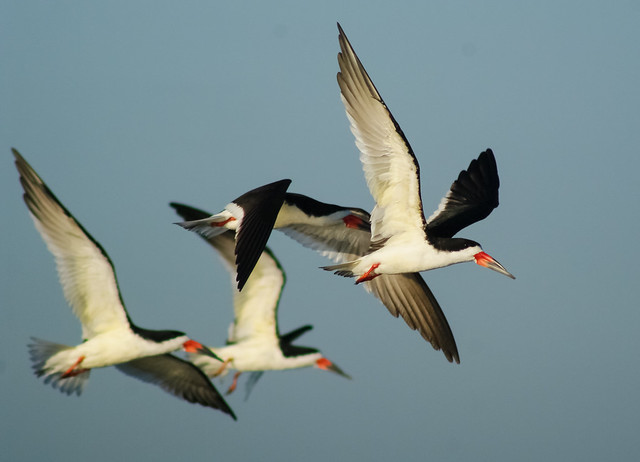This is the third in a three-part
series of posts about spring bird migration season, 2013. For the overall season
summary click here, and for the second post about warblers, click here. I
promise…no more bird posts for a while.
Unlike a lot of folk who saunter out to
watch birds on a regular basis, I am not a retiree[i]
, so my time in the field is often limited to brief stints on weekends, and
stolen hours on workday lunches. I’ve
never taken a long distance trip solely for avifauna[ii]
or had the luxury of devoting weeks to exploring an area.
However, with fatherhood looming with all of its requisite
duties and obligations in tow, I knew that this migration season would be one
of the last in which I would have a chance to spend liberally of my time. With
the season drawing rapidly to a close, I decided a last hurrah was in order,
and aimed to devote an entire day[iii]
to a long excursion around the Coast. I’ve never contemplated doing a “Big Year”,
in which one rushes to and from to check as many birds off a list as they can
in a year. However, I did like the idea of a Big Day focused on simply
exploring as much as I could in as many places and seeing as much as I could
practically hunt down. I decided to
mirror a similar trip I’d taken in coastal lands the year before and make a
grand circumnavigation of Galveston Bay.
It's awesome when your intended route for a day can be seen from space.
To the Coast
To be down on the Coast at sunrise, I heaved my weary self
out of bed at a dark and bleary 3:30 AM.
Dragging on some clothes in the dark, I bid goodbye to my wife and
proto-child, received a mumbled response in return that was likely something
along the lines of “what..the hell…is wrong…with you…”, grabbed my gear, and
set off[iv].
I flushed up my first bird of the day, an incredulous Common
Nighthawk, along the road as I left my neighborhood and cruised on down to
Galveston[v].
The 6:00 AM ferry to Bolivar Peninsula that morning was buffeted by cold winds,
so I didn’t get a chance to spend much time on deck as I usually do. Galveston
and Bolivar form the southern arms[vi]
of Galveston Bay, so the ferry ride is a short one across the opening. The usual mix of pelicans, gulls and terns wheeled around the ferry,
but it was too dark to note much else. Still, there’s nothing like the
sight of sunrise over the endless horizon of the Gulf.
Ferry to Bolivar, Dawn over the Gulf,
Birds and Morning Sky Abstract, Morning star
Bolivar Peninsula
Bolivar itself is a mishmash of high end development, utter
ruin, and coastal scrubland (I wrote about it and its trials
and tribulations during Hurricane Ike here.) However, its assorted habitats
are perfect for a variety of birdlife. At the mouth of the bay, a 5 kilometer
jetty strikes out deep into the Gulf to prevent sediment from closing the Bay opening. It creates behind it mudflats, lagoons, and beaches that
are great habitat for wildlife. The jetty was my first Bolivar stop, still wreathed in the blueblack cold of daybreak. The sun had just begun to burn its way through
the containing line of the horizon, turning the thin sheen of water on the
mudflats into molten gold. Identification of anything silhouetted by that
inferno was near impossible, so I had the rare opportunity to sit back and
enjoy the scenery as a whole on a bird trip.
Bolivar Peninsula
Daybreak over Bolivar
Flats, Flocks at Dawn, Sea of Gold, Sunrise Video, Sunrise Panoramic
Audubon maintains the massive tract of mudflats and
beachland behind the jetty as a shorebird sanctuary, and it is aptly named. The
shallow flats and sandbars support a teeming multitude of sandpipers and
plovers, as well as larger wading birds. Unlike most beaches in the area,
driving on the beach within the Sanctuary is not permitted, so one gets the
rare treat of a beachscape undisturbed but by tide and the occasional hiker. I
drove down the shore to the sanctuary, and then made my way out to a sandbar
and ate breakfast as the sun rose over the Gulf and curious birds skittered
around me. In the early light, the Flats looked like a living, undulating thing from the motion
of the thousands of peeps running this way and that.
Semiplamated Plover in
Ripples, Shorebirds, Willet
A Peregrine Falcon coursed over the
grassy marsh, and a small circle of Pelicans held court on a high spot in the
mudflats, surrounded by a coterie of thousands of assorted shorebirds circling
around them in a great swathe. Large flocks of Black Skimmers lifted up on my
approach, gliding past and around me almost silently despite the size of their
group.
Kingdom of the Pelicans,
Black Skimmers in Flight, Sandwich terns, Short-billed Dowitchers, Black-necked
Stilt
The sun rising in the sky meant time was running short for
the morning, so I picked my way back along the dune line of the beach to my car
and set out down the Peninsula’s length.
Wilson’s Plover on the
Dunes, Uncommon Morninghawk, Ripples in the Sandbar
However, a kolache[vii]
shop along the way convinced me that my healthy breakfast on the beach, though
beautiful in scenery, was meager in road-trippy goodness. I allowed myself to
be waylaid briefly for some additional Texas fare.
Yum.
I popped by various other points on the Peninsula, searching
its back bays and interior fields and wetlands, but found only ruined
foundations, abandoned boats, and trash. At Rollover Pass, where the Peninsula is
sundered from the mainland, birds were scarce. I did score a “lifer”, the
comically designed American Oystercatcher. Early fisherman had scared most of
the rest of the flocks off, and my excitement at a new species was tempered
somewhat by a reluctant but necessary encounter with perhaps the most ruinous,
festering port-a-potty known to man[viii].
Not wanting to waste anymore precious
morning light/time, I booked on down the Peninsula to High Island.
American Oystercatchers
are from the Platypus school of design
High Island
High Island is a Mecca[ix]
of sorts for the birdwatching community during migration. It’s essentially a town
built on a salt dome, making it the highest[x]
point on the coast. What makes it of any
note is its small stands of forest are the only game in town for birds who have
just flown day and night over the Gulf. Migrant drop out here to rest and refuel,
especially when flying into northerly headwinds. Nothing causes more excitement
during migration season than the potential for one of these “fallouts”, and
conditions were right that morning[xi].
Because of this geographical serendipity, Houston Audubon maintains a series of
wooded sanctuaries around the town[xii].
My first stop was at Boy Scout Woods, a
small forested tract that is a first stopover for many migrants.
High Island. The outer road
encircling the town shows a rough outline of the salt dome.
There were dozens of birders at BSW, and I think I brought
the average age down by a decade or two. One of the usual activities at these
locations is to sit (here on bleachers) and wait patiently for birds to come to
a water feature 50 feet away. Not my cup of tea. I roved around for a while,
catching some great birds in a nearby stand of bottlebrush. The word was going
around that there were a great number of birds at Smith Oaks, the largest of
the High Island Sanctuaries, so off I went.
High Island Landscape, Boy Scout Woods, Bottlebrush, Western
Tanager
In retrospect I should
have probably gone straight there in the morning, but it was still pretty
active when I got there. As soon as I got out of my car, the species list for
the day started growing exponentially. Several older birdwatchers were camped
out at a seeming nondescript spot between woods and lake. As I was talking with
them, a flurry of warblers swarmed around me. The lingering winds from the
fallout conditions had driven a large multitude of the birds to the shoreline
of this small lake and adjacent woods, creating and ideal migrant trap. I spent
the next hour or so hardly moving as species after species flitted by, past, or
onto me in a great swarm. While I was
there, I realized my life species count was 349…1 short of my original goal of
350. As I sat there in swarms of more common birds, a female Cerulean Warbler,
my long time nemesis[xiii],
popped out from the underbrush and posed briefly for picture. Number 350, check.
Smith Oaks, Oaks Path, Cerulean Warbler (f),
Blackburnian Warbler (f), Black-and-White Warbler, Chestnut-sided Warbler,
Vireo
Unlike other trips, the winds kept things fairly cool and
mosquito-free…an almost unheard of phenomenon in the tropical sauna that is usually
the Upper Texas Gulf Coast in May. The paths were practically dripping with
warblers, vireos, and other migrants. I walked through the wetlands, and
majestic old oak mottes of the sanctuary and took a quick swing by the rookery.
Surrounded by a manmade lake, a series of small islands supports a massive
rookery area at Smith Oaks, with a constant ear-shattering roar of Egrets,
Herons, Spoonbills, and other colonial birds conglomerated over a massive
bramble of nests and breeding grounds. Even more surreal is the underlying bass
laid down by cormorants, croaking like Tuban throat-singers. While the migrants
drive the crowds to High Island, the rookery spectacle is what always impresses
me the most.
Roseate Spoonbill, Egret Chicks, Snowy Egret, Rookery Video
The rest of the day dissolved into continuous hiking and
exploration of Smith Oaks, and a late afternoon flurry of warblers. I
reluctantly left the Sanctuary a little after 4 PM. Of the 38 or so warblers
one could potentially see in a season on the UTC, I had found at Smith Oaks
26 in one day, in one place[xiv].
Canada Warbler, Magnolia
Warbler, Golden-winged Warbler, Tennessee Warbler, Black-and-white Warbler Video
Anahuac
On the return portion of my loop around Galveston Bay, I
stopped by the decidedly different terrain of Anahuac National Wildlife Refuge.
Anahuac is a great big sea of flat. Tall marsh grasses enclosed only by levee
roads with almost no trees anywhere. It’s a place of alligators and old oil
drilling sites, but not much else except a relatively abundant diversity of marsh
birds[xv].
The light was fading a bit so I took a couple quick turns around the main
basins, but didn’t turn up much more than a couple annual looks at some coastal
species. Still, the different habitat added several more species on the day,
even if they weren’t terribly exciting.
Flatlands, All Along the Watch Tower, Least Bittern Up, Least
Bittern Down
The Road Home
At 7 PM, with the light dying slowly in a murky miasma on
the horizon, I set back on the long road to the freeway home. As I was passing
through some agricultural fields[xvi],
I noticed a great roiling cloud of dust headed my way. I pulled over as the
dust cloud passed me by. As it began to clear and light rays scattered through
the premature dusk, I noticed one, then two, then a dozen, then a multitude of
motionless hawks all around me. Some perched on fences, some stood on the
ground, some peered from the underbrush. The gathering of raptors became clear
when I saw that the source of the dust was a farmer plowing up a vast overgrown
field. Rodents in the vegetation fled in the wake of the tiller, onto the dry
bare ground, where they were a helpless feast for the hawks. I saw almost all
of the expected raptors for the day all at once. It was a fantastic way to end
the day.
Swainson’s Hawk on
Fenceline, Swainson’s Hawk on Ground, Swainson’s Hawk
Results
While it wasn’t completely the intention, this “Big Day” was
a pretty damn good last hurrah not only for the season, but for the foreseeable
future. I found over 140 bird species
in one day, 26 of which were warblers. Even though I hadn’t set out to run up a
huge tally, it spoke well of the extent of the day, and the scope of the sojourning
through different places. Fittingly, on what was likely my last long day of
birding for a while, I finally found my 350th species, fulfilling
the original goal I’d set for myself when I started off down the path of
learning the area birds. Even more fittingly, that 350th species was
my old nemesis, the Cerulean Warbler. When I pulled back into my driveway that
evening, it was 9:30. 220 miles and 18 solid hours
of excursion lay behind me, and the challenges of fatherhood lay before me. I’m
not looking backwards.
Black Skimmers in Flight
NOTES
[i]
Though I have enough grey/missing hair to pass as one these days.
[ii]
Unlike some of my colleagues who regularly travel the globe specifically for
birding. I fit mine in where time on vacations permits. I certainly don’t look
askance at bird-related travel. I just don’t have the time or vacation to do
it, nor do I think I could narrow my focus enough to build a trip solely on one
aspect of nature. This translates into a lot of early mornings before the rest
of the family awakens.
[iii]
So sad that a single day seems such a dear and inordinate amount of time. I remember
glorious expanses of time as a kid, vast, golden afternoons sacrificed to
wandering without a worry about other commitments. I know some folks who can
still harness that mindset, and I envy them unrelentingly.
[iv] There
is absolutely no greater travel feeling than the first step out the door, with
the vast expanse of your experience-to-be laid out before you, cresting over the
precipice of anticipation. These are the sort of semi-poetic, semi-insane
thoughts that pour through one’s head at 3 AM in the morning, when what you
really should be thinking is, “hey, did I forget the sunscreen?”.
[vi]
Galveston is called an Island, and Bolivar a Peninsula, but both are
essentially part of the long barrier island system that runs along the Texas
Coast. Viva la difference.
[vii]
Kolaches are a universal breakfast food in Texas, harkening back to the German/Czech
origins of the area. They’re really not that amazing to describe…essentially
various fruit danishes and pigs-in-blankets style meat/cheese/etc baked goods.
But with a side of chocolate milk, a couple Jalapeno-sausage-and cheese
kolaches and one or two sweet fruit kolaches will keep you running most of the
day.
[viii]
I’m convinced that it was a direct portal into a previously undescribed ring of
Dante’s hell. Perhaps punishment for those who balk at government spending on
proper utility infrastructure…
[ix] I
do not believe this comparison to overstate the relative zeal of the “pilgrims”
to High Island.
[x] This
is an incredibly relative use of the term “highest”. Also ”town”.
[xi] Conditions
were right to see birds; not great for the birds themselves. Birdwatchers love
fallouts, but it’s a mixed bag because strong northerly winds that ground birds
on the coast essentially mean that mortality in the migrating species is going
to go up appreciably as many don’t make it to the coast in the first place. It’s
almost a selfish sort of excitement, and makes me feel a little uneasy in the
extent to which people sometimes turn a blind eye to the consequences of the
phenomenon.
[xii] The
attendees of which, especially in migration season, make up an appreciable
portion of the town revenue.
[xiii]
Yes it is possible to have a 5-inch nemesis. Until this point, the Cerulean
warbler had been the one warbler species that seemed to always appear where I
had just been, or was going to go, but never when I was there.
[xiv] All
in all, as I posted about previously, I found 31 of the ~35 warbler species
over the course of the season. 1 of the missing species was too far afield to
go after, and the remaining trinity were exceptionally hard finds this
season.
[xv]
Like many coastal refuges, it primarily serves to protect wintering grounds for
the large numbers of geese and other waterfowl that flow into it each winter.
[xvi]
This part of the area is deeply, deeply rural. And flat. Think Mississippi
Delta.

